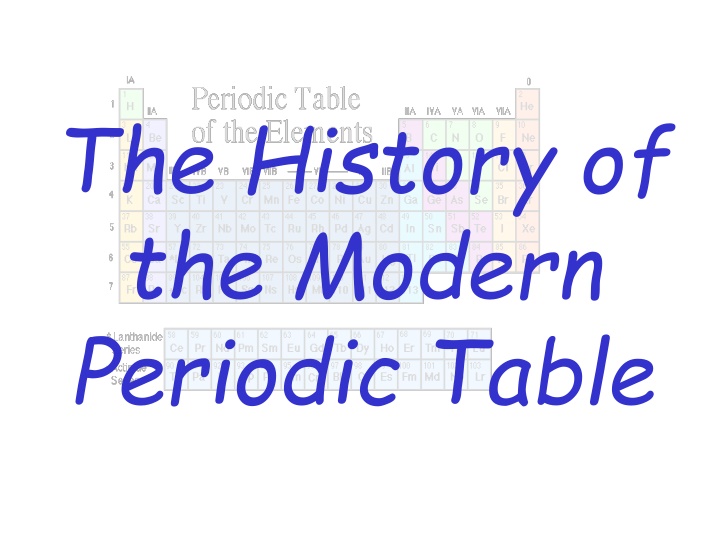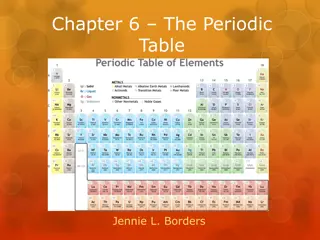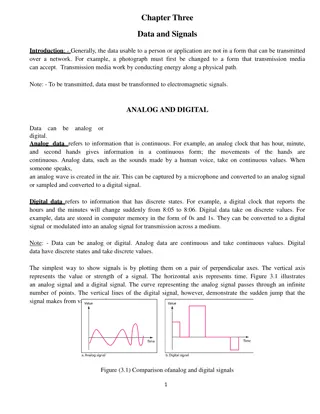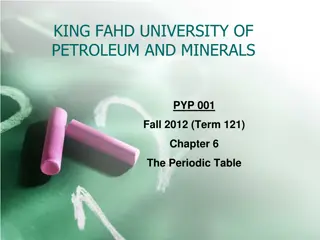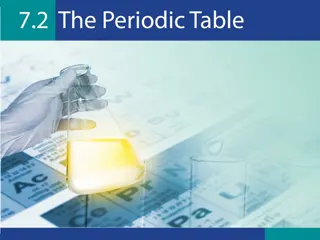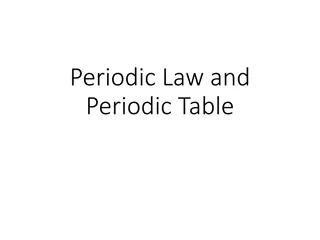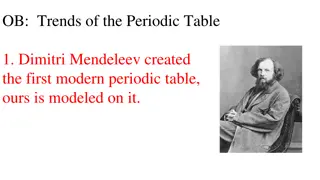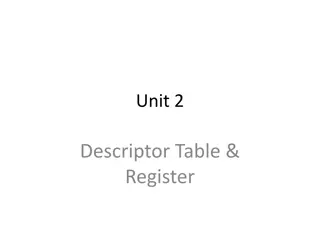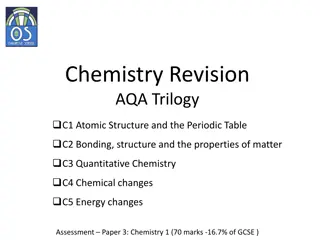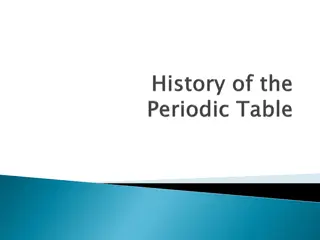The History and Significance of the Modern Periodic Table
Chemists in the nineteenth century categorized elements based on similarities in properties, leading to the development of the modern periodic table. Dmitri Mendeleev and Lothar Meyer played key roles in organizing elements by atomic mass and predicting unknown elements. Mendeleev's accurate predictions solidified his legacy as the father of the modern periodic table.
Download Presentation

Please find below an Image/Link to download the presentation.
The content on the website is provided AS IS for your information and personal use only. It may not be sold, licensed, or shared on other websites without obtaining consent from the author.If you encounter any issues during the download, it is possible that the publisher has removed the file from their server.
You are allowed to download the files provided on this website for personal or commercial use, subject to the condition that they are used lawfully. All files are the property of their respective owners.
The content on the website is provided AS IS for your information and personal use only. It may not be sold, licensed, or shared on other websites without obtaining consent from the author.
E N D
Presentation Transcript
The History of the Modern Periodic Table
During the nineteenth century, chemists began to categorize the elements according to similarities in their physical and chemical properties. The end result of these studies was our modern periodic table.
Dmitri Mendeleev In 1869 he published a table of the elements organized by increasing atomic mass. 1834 - 1907
The world first saw Mendeleevs periodic table when it was published in a German scientific journal.
Lothar Meyer At the same time, he published his own table of the elements organized by increasing atomic mass. 1830 - 1895
Both Mendeleev and Meyer arranged the elements in order of increasing atomic mass. Both left vacant spaces where unknown elements should fit. So why is Mendeleev called the father of the modern periodic table and not Meyer, or both?
Mendeleev... stated that if the atomic weight of an element caused it to be placed in the wrong group, then the weight must be wrong. (He corrected the atomic masses of Be, In, and U) was so confident in his table that he used it to predict the physical properties of three elements that were yet unknown.
After the discovery of these unknown elements between 1874 and 1885, the fact that Mendeleev s predictions were amazingly close to the actual values, his table was generally accepted.
However, in spite of Mendeleevs great achievement, problems arose when new elements were discovered and more accurate atomic weights determined. By looking at our modern periodic table, can you identify what problems might have caused chemists a headache? Ar and K Co and Ni Te and I Th and Pa
Henry Moseley In 1913, through his work with X-rays, he determined the actual atomic number of the elements*. He rearranged the elements in order of increasing atomic number. * There is in the atom a fundamental quantity which increases by regular steps as we pass from each element to the next. This quantity can only be the charge on the central positive nucleus. 1887 - 1915
Henry Moseley His research was halted when the British government sent him to serve as a foot soldier in WWI. He was killed in the fighting in Gallipoli by a sniper s bullet, at the age of 28. Because of this loss, the British government later restricted its scientists to noncombatant duties during WWII.
Glenn T. Seaborg After co-discovering 10 new elements, in 1944 he moved 14 elements out of the main body of the periodic table to their current location below the Lanthanide series. These became known as the Actinide series. 1912 - 1999
Glenn T. Seaborg He is the only person to have an element named after him while still alive. "This is the greatest honor ever bestowed upon me - even better, I think, than winning the Nobel Prize." 1912 - 1999
Periodic Law When elements are arranged in order of increasing atomic number, there is a periodic pattern in their physical and chemical properties.
The periodic table is the most important tool in the chemist s toolbox!
